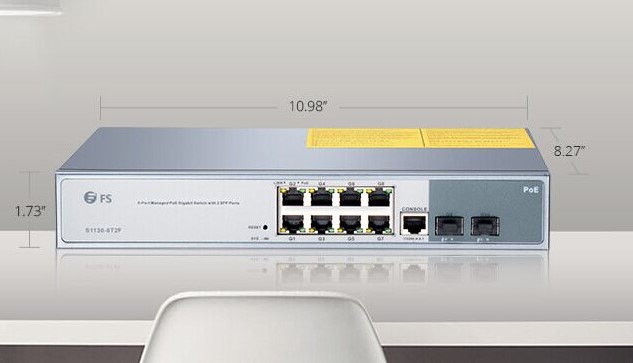In computer networking, an Ethernet switch is a LAN interconnection device that serves as a bridge between multiple equipment and a Local Area Network (LAN). Ethernet switches are categorized into two main types – modular and fixed configuration. Fixed configuration switches have a fixed number of ports and are not expandable. You can select the switches based on the number of ports. The larger the network, the greater number of ports you’ll need. Fixed configuration switches are generally available in 5, 8, 10, 16, 24, 28, 48, and 52-port configurations. Some people may question that is it a good idea to purchase two 8-port switches other than one 16 port gigabit switch since the price of two 8-port switches is much lower than that of one 16 port gigabit switch? 2 * 8 Port Gigabit Switch VS 1 * 16 Port Gigabit Switch—a good question worthy of discussing.
2 * 8 Port Gigabit Switch VS 1 * 16 Port Gigabit Switch
This question is very common and can be subjective according to the urgency of uptime, financial budget, network management and space involved. If most variables are not a problem, then, the answer is YES. Taking two switches from different vendors as an example, there is a wide gap between their price.
FS.COM S1130-8T2F managed PoE+ switch comes with 8x 10/100/1000Base-T RJ45 Ethernet ports. It can supply power to network equipment such as weather-proof IP cameras with windshield wiper and heater, high-performance AP and IP telephone. This managed PoE+ switch is highly flexible, the transmission distance of the SFP fiber port can be up to 120km, and with high resistance to electromagnetic interference. It also features superior performance in stability, environmental adaptability and the price of it is $159.
Intellinet 16 port gigabit Ethernet PoE+ web-managed switch with 2 SFP ports is sold at $501. Equipped with sixteen Gigabit Ethernet ports, all of which support 802.3at/af Power over Ethernet (PoE/PoE+), this switch can power wireless LAN access points and bridges, VoIP (Voice over Internet Protocol) telephones, IP surveillance cameras.
Apart from price, there are other elements need to be considered. If the entire network depends on a single switch and, unfortunately, the unit undergoes a catastrophic failure, the whole network would break down. However, if one of the 2 switches fails, only half the network is down but still able to limp along until there is a replacement. The only shortcoming is that you will lose two ports by connecting them, which means that you will have a 14-port switch if you buy two 8 ports.
If you need to expand in the future, it’ll be nicer to work with a 16 port gigabit switch instead of a couple 8’s. In smaller setups and homes, you can hardly notice the difference between the two, because you seldom have lots of transfers all at the same time and all destined for ports on the opposite switch. While in larger data centers, it can make a difference as you are constricting data flow by forcing 7 ports through one port to get to the other switch.
Conclusion
Gigabit Ethernet transmitting at approximately one gigabit per second, as well as fiber optic cable are all products created in line with people’s desire for faster broadband. Most people turn to gigabit switches as they are easy to use, provide plug and play installations and can save the power consumption. After analyzing the issue—2 * 8 Port Gigabit Switch VS 1 * 16 Port Gigabit Switch, I sincerely hope it can help you make a right choice.
Related Article: How to Choose an 8 Port Gigabit Switch?

